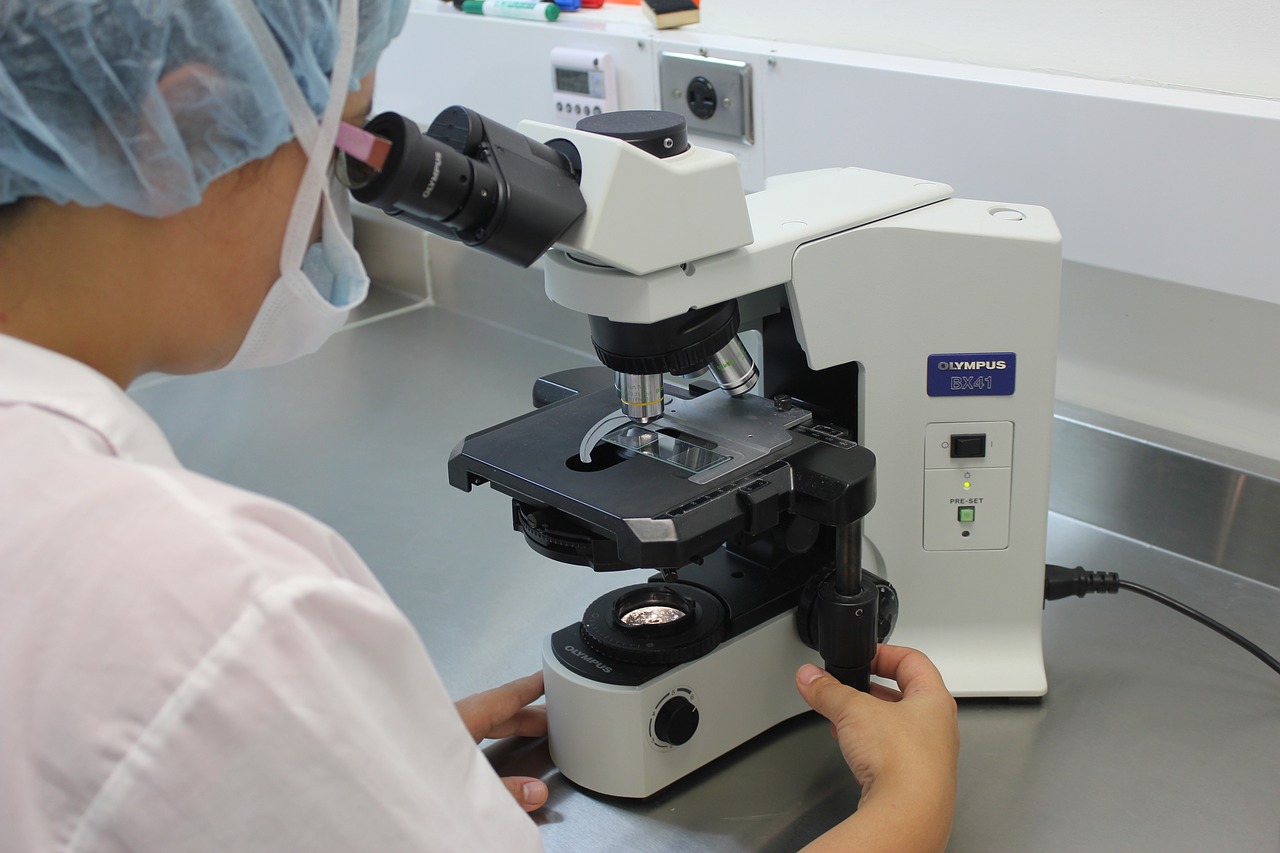
A microscope is an optical instrument that is used to produce enlarged images of very small objects. The most popular kind of microscope is an optical microscope that functions through a lens, forming images from the light. An acoustic microscope employs high-frequency ultrasound to form images. There is also an electron microscope which forms images from electronic beams. However, the most simple and basic type of microscope is an “optical microscope”. It comes with a single lens, magnifying glasses, and jeweler’s loupes.
Unlike a simple microscope having a single lens, a compound microscope has two lenses. The primary features of a compound microscope are the objective, used for holding the lens near the specimen, and the eyepiece that holds the lens near the observer. A modern compound microscope also comprises of a mirror which acts as a source of light, a focusing mechanism, and a surface where the object is placed to be examined. A compound microscope may also include a built-in camera for the purpose of microphotography.
During the 1st century AD, glass had been invented by the Romans. They observed that if one held a lens over an object, the object would look bigger. These lenses were referred to as “magnifiers” or “burning glasses”. Around the same time, Seneca discovered the magnification of objects by a globe of water. It wasn’t until 1600 that lenses were produced to be worn as spectacles. In the late 17th century, Antony Van Leeuwenhoek – a Dutch draper and scientist, became the first man to produce and use a real microscope. He made his own microscope which included a single convex glass lens and was hand-held by a metal holder.
Leeuwenhoek became more involved in Science and attempted various methods to improve the microscope. With his new and advanced microscope, he was able to see objects that no one else had encountered before. Owing to the invention of the microscope, scientists were able to see bacteria, yeast, blood cells, and many tiny insects that were difficult to detect otherwise. With the aid of microscopes, scientists and doctors were enabled to conduct more advanced and extensive research in the fields of science and medicine respectively.
Different microscopes are constructed for different applications. Hence, it is imperative that one invest in a microscope which suits their application. One will need a compound microscope, a high powered instrument, used for viewing small specimens like bacteria, germs, and water organisms. On the other hand, a stereo microscope is a low-powered microscope, used to view slightly visible specimens like insects, bugs, leaves, and rocks.